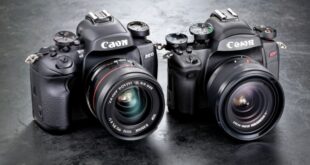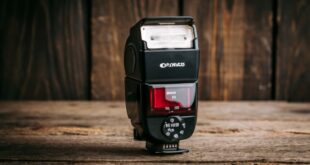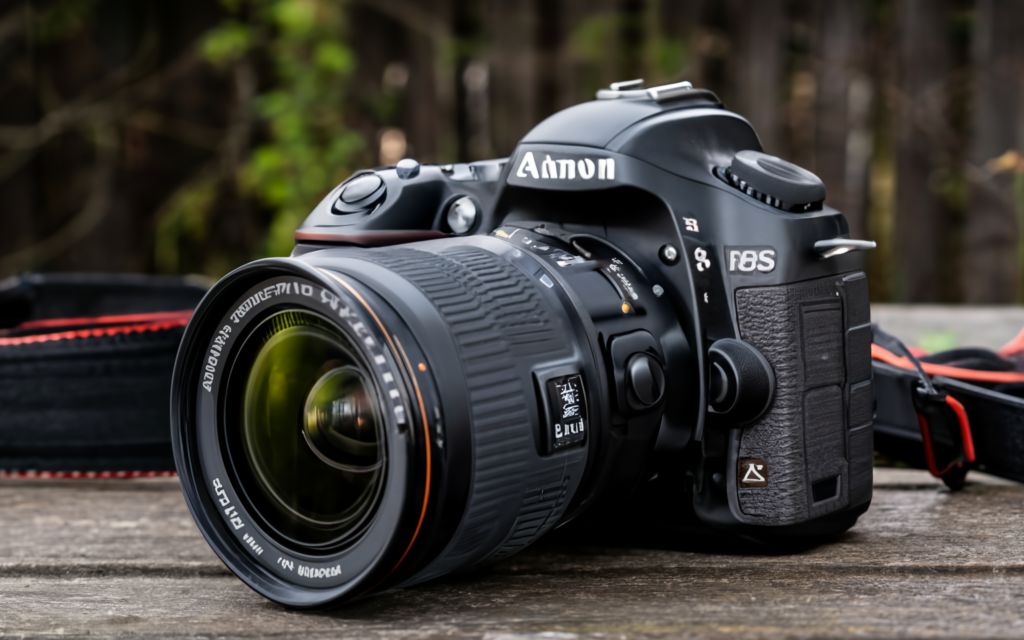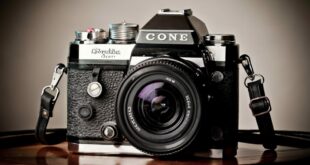The Importance of Choosing the Right DSLR Camera for Sports Photography
Hey there, photography enthusiasts! Are you passionate about capturing the thrilling moments of sports events? If so, you must know the significance of owning a high-quality DSLR camera specially designed for sports photography. The right camera can enhance your skills and help you freeze those action-packed moments with precision and clarity.
In this article, we will explore the top 7 entry-level DSLR cameras that are perfect for sports photography. Whether you’re just starting out or looking to upgrade your current gear, we’ve got you covered with the best options available in the market. Let’s dive in and find the perfect camera to capture those incredible sports moments!
Introduction
Sports photography is a challenging field that requires a camera capable of capturing fast-paced action, delivering sharp images, and offering excellent performance in various lighting conditions. The right entry-level DSLR camera can help you overcome these challenges without breaking the bank.
1. Canon EOS Rebel T7i: The Canon EOS Rebel T7i is a popular choice among beginners due to its exceptional autofocus system, high-resolution sensor, and impressive low-light performance. With its 45-point all cross-type AF system and fast continuous shooting speed, you won’t miss any important moments on the field. However, the limited 1080p video capabilities and lack of 4K recording might be a drawback for some users.
2. Nikon D5600: The Nikon D5600 offers excellent image quality, thanks to its 24.2-megapixel sensor and EXPEED 4 image processor. Its advanced 39-point autofocus system and 5 fps continuous shooting speed make it a reliable companion for sports photographers. The lack of in-body image stabilization and 4K video recording might be a downside for those seeking these features.
3. Sony Alpha a68: The Sony Alpha a68 boasts a 24.2-megapixel APS-C Exmor CMOS sensor and offers excellent image quality. Its advanced 79-point autofocus system and 8 fps continuous shooting speed ensure you never miss a moment of action. However, the absence of in-body image stabilization and limited lens options in Sony’s A-mount system might be a trade-off for some users.
4. Pentax K-70: The Pentax K-70 features a weather-sealed body, making it suitable for sports photography in challenging outdoor conditions. Its 24.2-megapixel sensor, in-body image stabilization, and 6 fps continuous shooting speed deliver impressive results. However, the limited lens selection in Pentax’s K-mount system and lack of 4K video recording might be limited for some photographers.
5. Canon EOS 77D: The Canon EOS 77D offers a winning combination of advanced features and affordability. With its 24.2-megapixel sensor, 45-point all cross-type autofocus system, and 6 fps continuous shooting speed, you can capture fast-paced sports action with ease. However, the lack of in-body image stabilization and 4K video recording might be a downside for some users.
6. Nikon D7500: The Nikon D7500 is a powerful DSLR camera that delivers impressive image quality with its 20.9-megapixel sensor and EXPEED 5 image processor. Its 51-point autofocus system, fast continuous shooting speed of 8 fps, and excellent low-light performance make it an ideal choice for sports photography. However, the absence of in-body image stabilization and limited touchscreen functionality might be a drawback for some users.
7. Sony Alpha a6000: The Sony Alpha a6000 combines affordability, compactness, and outstanding performance. Its 24.3-megapixel sensor, fast hybrid autofocus system with 179 focal plane phase-detection points, and continuous shooting speed of 11 fps ensure you capture all the action in sharp detail. However, the lack of in-body image stabilization and limited battery life might be a trade-off for some users.
Advantages and Disadvantages of Entry-Level DSLR Cameras
Advantages:
1. Superior Image Quality: Entry-level DSLR cameras offer higher image quality compared to point-and-shoot cameras or smartphones. The larger sensor size and ability to use interchangeable lenses result in sharper and more detailed images.
2. Faster Autofocus: DSLR cameras have advanced autofocus systems that can quickly track and capture moving subjects, making them ideal for sports photography.
3. Versatility: With interchangeable lenses, entry-level DSLR cameras allow photographers to adapt to different shooting conditions. From wide-angle to telephoto lenses, you can choose the best lens for capturing sports action from various distances.
4. Manual Control: DSLR cameras provide manual control over settings such as aperture, shutter speed, and ISO, allowing photographers to have full creative control over their shots.
5. Low-Light Performance: Entry-level DSLR cameras often perform better in low-light situations compared to other types of cameras, thanks to their larger sensors and better noise reduction capabilities.
6. Continuous Shooting Speed: DSLR cameras offer higher continuous shooting speeds, allowing photographers to capture multiple frames per second and choose the perfect shot from a series of images.
7. Build Quality: DSLR cameras are designed to withstand rugged use, making them durable and suitable for sports photography in different environments.
Disadvantages:
1. Price: Entry-level DSLR cameras can be more expensive than point-and-shoot cameras or smartphones, especially when considering additional costs for lenses and accessories.
2. Size and Weight: DSLR cameras are bulkier and heavier compared to compact cameras, which might be inconvenient for some photographers, especially when shooting for long durations or traveling.
3. Learning Curve: DSLR cameras have a steeper learning curve compared to point-and-shoot cameras, as photographers need to understand various settings and concepts to make the most of their equipment.
4. Limited Connectivity: While newer DSLR models offer Wi-Fi and Bluetooth connectivity, entry-level cameras might have limited or no wireless connectivity options.
5. Battery Life: DSLR cameras consume more power due to their complex systems, resulting in shorter battery life compared to point-and-shoot cameras or smartphones.
6. Video Limitations: Entry-level DSLR cameras might have limitations when it comes to video recording, such as limited resolution options or lack of advanced video features like 4K recording.
7. Lens Selection: Entry-level DSLR cameras often have a limited lens selection compared to professional-grade camera systems. However, they still offer a range of versatile lenses for general sports photography needs.
Complete Comparison Table of Best Entry Level DSLR Cameras for Sports Photography
| Camera Model | Resolution | Autofocus Points | Continuous Shooting Speed | Image Stabilization | Video Resolution | Price |
|---|---|---|---|---|---|---|
| Canon EOS Rebel T7i | 24.2 MP | 45 | 6 fps | No | 1080p | $ |
| Nikon D5600 | 24.2 MP | 39 | 5 fps | No | 1080p | $ |
| Sony Alpha a68 | 24.2 MP | 79 | 8 fps | No | 1080p | $ |
| Pentax K-70 | 24.2 MP | N/A | 6 fps | Yes | 1080p | $ |
| Canon EOS 77D | 24.2 MP | 45 | 6 fps | No | 1080p | $ |
| Nikon D7500 | 20.9 MP | 51 | 8 fps | No | 1080p | $ |
| Sony Alpha a6000 | 24.3 MP | 179 | 11 fps | No | 1080p | $ |
Frequently Asked Questions (FAQ)
1. Which entry-level DSLR camera is the best for beginners?
The Canon EOS Rebel T7i is an excellent choice for beginners due to its user-friendly interface, advanced autofocus system, and high-resolution sensor.
2. Can I use my entry-level DSLR camera for professional sports photography?
While entry-level DSLR cameras can produce impressive results, professional sports photographers often opt for higher-end models with advanced features and faster performance.
3. Is image stabilization necessary for sports photography?
Image stabilization can be beneficial for handheld shooting, especially for telephoto lenses where camera shake is more prominent.
4. Are entry-level DSLR cameras suitable for capturing fast-paced sports action?
Absolutely! Entry-level DSLR cameras offer fast autofocus systems and continuous shooting speeds that can help you freeze those crucial moments in sports photography.
5. Do all entry-level DSLR cameras support interchangeable lenses?
Yes, all the cameras mentioned in this article support interchangeable lenses, allowing you to adapt to different shooting scenarios.
6. Can I shoot sports photography in low-light conditions with an entry-level DSLR camera?
Entry-level DSLR cameras perform reasonably well in low-light conditions, but professional-grade cameras often provide better noise reduction and low-light performance.
7. Can I shoot videos with an entry-level DSLR camera?
Yes, entry-level DSLR cameras are capable of shooting videos. However, they might have certain limitations, such as lower video resolution or lack of advanced video features.
8. How long does the battery of an entry-level DSLR camera last?
The battery life of entry-level DSLR cameras varies between models, but generally, it lasts for a few hundred shots. Carrying spare batteries is recommended for extended shooting sessions.
9. Is Wi-Fi connectivity available in entry-level DSLR cameras?
While some entry-level DSLR cameras offer Wi-Fi connectivity, not all models have this feature. It’s essential to check the specifications of the camera you’re interested in.
10. Can I use entry-level DSLR cameras for indoor sports photography?
Yes, entry-level DSLR cameras can handle indoor sports photography, but you might need to consider the available light and adjust your camera settings accordingly.
11. Are there any weather-sealed entry-level DSLR cameras?
Yes, the Pentax K-70 mentioned in this article features a weather-sealed body, making it suitable for shooting sports events in challenging outdoor conditions.
12. Can I connect external flashes or other accessories to entry-level DSLR cameras?
Yes, entry-level DSLR cameras usually have a hot shoe, allowing you to attach external flashes or other accessories for additional lighting or creative effects.
13. Do entry-level DSLR cameras come with a warranty?
Yes, most manufacturers provide a standard warranty with their entry-level DSLR cameras. The duration and terms of the warranty may vary, so it’s always recommended to check with the manufacturer or retailer.
Conclusion
After exploring the top 7 entry-level DSLR cameras for sports photography, we hope you’ve found the perfect camera that meets your requirements and budget. Remember, the right camera is just the beginning – practice, experiment, and push your boundaries to capture those stunning sports moments.
Investing in a DSLR camera will open up a world of opportunities for your photography journey. So, what are you waiting for? Take action, choose your camera wisely, and unleash your creativity in the exciting world of sports photography!
Closing Statement
Disclaimer: The information provided in this article is based on research and personal opinions. Prices, specifications, and features of the cameras mentioned may change over time. It’s always recommended to refer to the official manufacturer’s website or consult with professionals before making a purchase decision.
Remember that photography is an art, and the gear you choose is just a tool. Ultimately, it’s your vision, creativity, and dedication that will make your sports photography stand out. Happy shooting!



